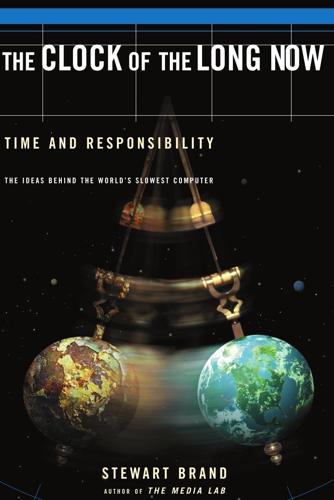
Clock of the Long Now
by
Stewart Brand
Published 1 Jan 1999
CHAPTER 9, CLOCK/LIBRARY :48 “In some sense, we’ve run out of our story . . .” Quoted in Po Bronson, “The Long Now,” Wired (May 1998), p. 118. :48 “If you’re going to do something that’s meant to be interesting for ten millennia . . .” Danny Hillis interview with Richard Kadrey, HotWired (5 December 1995). :51 “To me the Clock and the Library capture two different aspects of time.” Danny Hillis in same HotWired interview as above. :53 Historian Daniel Boorstin reports that the Inner Shrine at Ise. . . Daniel Boorstin, The Creators (New York: Random House, 1992), p. 140. CHAPTER 10, BEN IS BIG :56 The monument is named for its biggest bell, Big Ben.
…
People call it change, and rather than yearn for it, they brace themselves against its force. Technology is treated as something that pushes us around rather than something we create. It’s a bother, it’s a boon, it’s a discipline; it’s a given. “What people mean by the word technology,” says computer designer Alan Kay, “is anything invented since they were born.” Computer designer Danny Hillis counters, “What people mean by the word technology is the stuff that doesn’t really work yet.” Technology is both the problem and its own solution. No wonder it obsesses us. The gathering acceleration of history was noted in the 1790s by Thomas Malthus and in 1909 by Henry Adams, who wrote, The world did not double or treble its movement between 1800 and 1900, but, measured by any standard . . . the tension and vibration and volume and so-called progression of society were fully a thousand times greater in 1900 than in 1800—the force had doubled ten times over, and the speed, when measured by electrical standards as in telegraphy, approached infinity, and had annihilated both space and time.
…
Later doublings in an exponential sequence, we come to realize, are absolutely ferocious. The changes no longer feel quantitative or qualitative but cataclysmic; each new doubling is a new world. Ad man Regis McKenna calls it “continuous discontinuous change.” Life becomes perpetual transition with no resting point in sight. Danny Hillis explains what motivated him to build a linear Clock in an exponential era: “Some people say that they feel the future is slipping away from them, but to me the future is a big tractor-trailer slamming on its brakes in front of me just as I was pulling into its slipstream. I am about to crash into it.

The End of Illness
by
David B. Agus
Published 15 Oct 2012
To Steven Spielberg, for your contagious passion and insight. To Larry Ellison, for your certainty and trust in me. To Marc Benioff, for your true friendship. To Al Gore, for pushing me in the right direction (and first introducing me to Danny Hillis). To Max Nikias, Carmen Puliafito, and Eli Broad, for bringing me to USC, a remarkable academic home. To Sumner Redstone, for your unwavering belief in me. To Larry Norton, Danny Hillis, and Murray Gell-Mann, for making me think beyond my own discipline and putting up with my endless questions. To Lance Armstrong and the late Steve Jobs, for your unending inspiration. To Michael Milken and Stuart Holden for your encouragement over the past decade.
…
—Dean Ornish, MD, founder and president of the Preventive Medicine Research Institute; clinical professor of medicine at the University of California, San Francisco “David Agus is one of the great medical thinkers of our age. The End of Illness reframes the entire discussion of sickness and health. Instead of thinking about disease, Agus thinks about the system that is the human body, and what we need to do to guide it toward health. Before you take your next vitamin, read this book.” —Danny Hillis, PhD, cofounder, Applied Minds and Thinking Machines “Dr. David Agus has been disrupting medicine as we know it for his entire career. Now he brings his ideas out of the lab and exam room and into the lives of everyone—showing us how to live long, healthy, disease-free lives. Reading this book is the best thing you can do for yourself and your loved ones.
…
In this regard, DNA is practically accidental; just as accidents happen, so does DNA, without our having much say in the matter. What most people don’t think about, though, is that DNA says more about our risk than our fate. It governs probabilities, not necessarily destinies. As my friend and colleague Danny Hillis (whom we’ll meet later when I cover emerging technologies) likes to describe it, DNA is simply a list of parts or ingredients rather than a complete manual that explains how those parts work together to generate results. To hold your DNA responsible for your health is missing the forest for the trees.
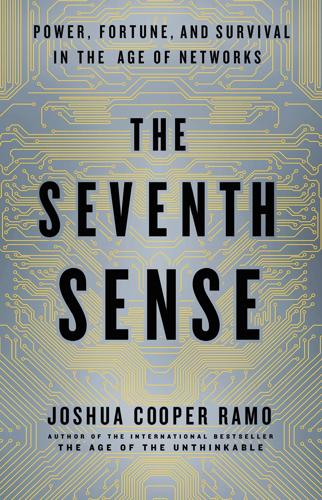
The Seventh Sense: Power, Fortune, and Survival in the Age of Networks
by
Joshua Cooper Ramo
Published 16 May 2016
But before we can do that, there is one final question we need to answer about the networks all around us now, the only one that will put us on an even level with the New Caste: What, in the end, are the networks really for? CHAPTER EIGHT “MapReduce”: The Compression of Space and Time In which we learn what networks are really, rather wonderfully, meant for. 1. Starting in the early 1990s, the American scientist and inventor Danny Hillis began what has since become an every-few-months sort of ritual. He packed up from his home in Encino, a short drive over the Hollywood Hills from Los Angeles, and headed off for a desolate corner of the Southwest for a few days that would largely be defined by rock and dynamite. Hillis, who was born in 1956, has spent most of his life working at the electron level of the world, crafting some of the most significant computer processing systems of our age.
…
But when our committee sat down to talk it over, we knew that the boldfaced names didn’t want or need a prize. They certainly didn’t need a million dollars. As we considered people we all knew who’d made fundamental, essential contributions but had not been as boldfaced as they might have been, Danny Hillis’s name came up immediately. Hillis had developed a revolutionary “massively parallel” computer in the 1980s. The machine had helped create an entire discipline of high-speed computing by tying together tens of thousands of processors to tackle a problem at once. Traditional computers worked problems the way you or I might, step by step.
…
His centrality in that project was memorialized in a famous speech he once delivered in which he described having one of the very first Internet domain names in history—and then whipped out a sheaf of bound pages that represented the entire Internet address list at the time. It ran about fifty pages. If there were membership cards in the New Caste, Danny’s would have had a very low number. It was an easy decision for our prize committee. No Bill Gates. No Steve Jobs. So here’s how I met Danny Hillis: I called to tell him he had won a million dollars. (I recommend this as a way to start a friendship.) Hillis had been a tinkerer since he was a child and never seemed to have lost the pleasure of a wild intermingling of joy and practice. You can’t tell with him where passion ends and work starts.
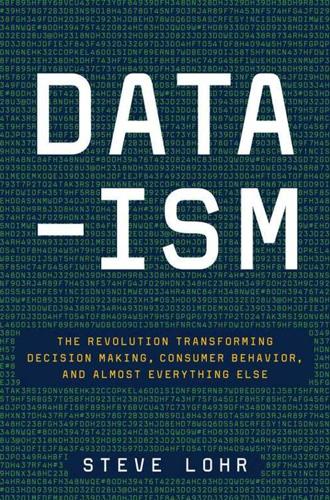
Data-Ism: The Revolution Transforming Decision Making, Consumer Behavior, and Almost Everything Else
by
Steve Lohr
Published 10 Mar 2015
They include Sam Adams, Brooke Barrett, Richard Berner, Patrick Bosworth, Thomas Botts, Erik Brynjolfsson, John Calkins, Murray Campbell, Dennis Charney, Herbert Chase, Jeffrey Chester, Sharath Cholleti, Adam D’Angelo, Arne Duncan, Sue Duncan, Tony Fadell, Edward Felten, David Ferrucci, Rachana Shah Fischer, Brian Gehlich, Jim Goodnight, Nagui Halim, Hendrik Hamann, Glenn Hammerbacher, Lenore Hammerbacher, Danny Hillis, Jeffrey Immelt, Jon Iwata, James Kalina, Kaan Katircioglu, Gary King, Jon Kleinberg, Martin Kohn, Randy Komisar, Patricia Kovatch, Edward Lazowska, and Michael Linderman. They also include Mark Malhotra, James Manyika, Yoky Matsuoka, Andrew McAfee, David McQueeney, Douglas Merrill, Tom Mitchell, Craig Mundie, Arvind Narayanan, Tim O’Donnell, Sharoda Paul, Alex Pentland, Claudia Perlich, Stephanie Pieroni, William Pulleyblank, Tara Richardson, Virginia Rometty, Itamar Rosenn, Jeff Rothschild, Marc Rotenberg, Alex Rubinsteyn, William Ruh, Eric Schadt, Benjamin Scheuer, Neal Sidhwaney, Larry Smarr, Andrew Smeall, Jim Spohrer, Halle Tecco, Menka Uttamchandani, Veronica Vargas, Anil Varma, David Vivero, David Vladeck, Donald Walker, Danny Weitzner, and Michelle Zhou.
…
In high-stakes decisions like diagnosing cancer, you unquestionably want a human in the loop. But systems like IBM’s Watson will increasingly plumb data, accumulate knowledge, and build models of the world—on their way to sometimes becoming superhuman decision makers. How do you really control them? At a research conference at IBM’s Watson lab, Danny Hillis, an artificial intelligence expert and cofounder of Applied Minds, a technology design and research firm, took up that issue. The ever-smarter systems being made by IBM, Google, and others, Hillis says, will each need its own explanatory assistant—“a storyteller.” A computer system, no matter how clever, he said, will not get very far if it just spouts answers.
…
Those arguments help, but they do not speak to the issues of trust and comfort with the machines. People are not aggregates; we all experience the world as individuals. So declaring that something will be good for the population, on average, isn’t entirely persuasive. What will be needed is the storytelling that Danny Hillis, the artificial intelligence expert, describes as the machines explaining themselves, giving a simplified account of how they work. What is also needed is time—a threshold of accumulated experience of living with the decision-making machines, in the house or on the road, to reach a level of comfort.

Whole Earth Discipline: An Ecopragmatist Manifesto
by
Stewart Brand
Published 15 Mar 2009
Something was pathological about Yucca Mountain, and the sickness was embedded in its long-term thinking, its ten-thousand-year time frame. Among those on the bus were Danny Hillis, designer of the clock, and Peter Schwartz, cofounder of Global Business Network. I wrote in my trip report that at the entrance to the Repository,a training video informed us that it was important not to trip on anything, and showed how to use a belt-mounted emergency breathing apparatus. Danny Hillis remarked that it is the device which, in event of a mine fire, OSHA demands to find on your body. Outside the tunnel entrance were not one but two brand new ambulances, contextually shrieking “SAFETY, SAFETY, SAFETY!!”
…
We promoted bioregionalism, restoration, and “reinhabitation” of one’s natural environment. There’s now an insightful book about all that by Andrew Kirk—Counterculture Green: The Whole Earth Catalog and American Environmentalism (2007). These days I divide my time between Global Business Network and an idiosyncratic foundation. In the 1990s, when inventor Danny Hillis came up with an idea to help people think long-term by building a monumental ten-thousand-year clock, I responded by cofounding The Long Now Foundation with him in 1996. “Fostering long-term responsibility” is its mission. The “long now” is defined as the last ten thousand years and the next ten thousand years.
…
We’ll create all kinds of interesting recombinations, we’ll blast seeds with radiation and chemicals to get lots of mutations, and we’ll grow whatever comes up, pick the ones we like, and hope for the best.’ What would people say about the risk of doing it that way?” They would call it genetic gambling, says inventor Danny Hillis, and outlaw it. As for medicine, the panic generated by recombinant DNA back in the 1970s has completely died away. In 1982, a human gene was introduced into the bacterium E. coli so that “bioreactors” of trillions of the engineered organisms could generate vast quantities of human insulin in a way that is safer and far cheaper than the old technique using the pancreases of calves and pigs.
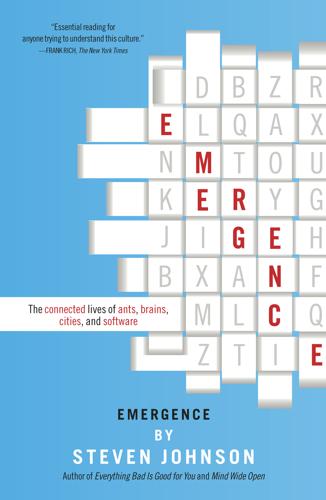
Emergence
by
Steven Johnson
Holland developed his ideas in the sixties and seventies using mostly paper and pencil—even the more advanced technology of that era was far too slow to churn through the thousandfold generations of evolutionary time. But the massively parallel, high-speed computers introduced in the eighties—such as Danny Hillis’s Connection Machine—were ideally suited for exploring the powers of the genetic algorithm. And one of the most impressive GA systems devised for the Connection Machine focused exclusively on simulating the behavior of ants. It was a program called Tracker, designed in the mideighties by two UCLA professors, David Jefferson and Chuck Taylor.
…
The new paradigm borrows heavily from the playbook of natural selection, breeding new programs out of a varied gene pool. The first few decades of software were essentially creationist in philosophy—an almighty power wills the program into being. But the next generation is profoundly Darwinian. * * * Consider the program for number sorting devised several years ago by supercomputing legend Danny Hillis, a program that undermines all of our conventional assumptions about how software should be produced. For years, number sorting has served as one of the benchmark tests for ingenious programmers, like chess-playing applications. Throw a hundred random numbers at a program and see how many steps it takes to sort the digits into the correct order.
…
“I’ve been fascinated with adaptive computing for some time now,” he says. “There are some rather hard problems to overcome, however. Some of the most promising technologies seem to also be the most parallel, like genetic algorithms, neural networks. These systems tend to learn by accumulating experience over a wide number of individual cases.” Think here of Danny Hillis’s number-sorting program. Hillis did manage to coax an ingenious and unplanned solution from the software, but it took thousands of iterations (not to mention a Connection Machine supercomputer). No gameplayer wants to sit around waiting for his on-screen characters to finish their simulated evolution before they start acting naturally.

Possible Minds: Twenty-Five Ways of Looking at AI
by
John Brockman
Published 19 Feb 2019
This grand evolutionary loop can now be closed, with atoms arranging bits arranging atoms. Chapter 17 THE FIRST MACHINE INTELLIGENCES W. DANIEL HILLIS W. Daniel “Danny” Hillis is an inventor, entrepreneur, and computer scientist, Judge Widney Professor of Engineering and Medicine at USC, and author of The Pattern on the Stone: The Simple Ideas That Make Computers Work. While Danny Hillis was an undergraduate at MIT, he built a computer out of Tinkertoys. It has around ten thousand wooden parts, plays tic-tac-toe, and never loses; it’s now in the Computer History Museum in Mountain View, California.
…
Heinz was working on his book The Dreams of Reason: The Computer and the Rise of the Science of Complexity, which he considered to be a research agenda for science in the 1990s. Through the Reality Club meetings, I got to know two young researchers who were about to play key roles in revolutionizing computer science. At MIT in the late seventies, Danny Hillis developed the algorithms that made possible the massively parallel computer. In 1983, his company, Thinking Machines, built the world’s fastest supercomputer by utilizing parallel architecture. His “connection machine” closely reflected the workings of the human mind. Seth Lloyd at Rockefeller University was undertaking seminal work in the fields of quantum computation and quantum communications, including proposing the first technologically feasible design for a quantum computer.
…
The Fifth Generation: Artificial Intelligence and Japan’s Computer Challenge to the World was published in 1983. We had a code name for the project: “It’s coming, it’s coming!” But it didn’t come; it went. From that point on I’ve worked with researchers in nearly every variety of AI and complexity, including Rodney Brooks, Hans Moravec, John Archibald Wheeler, Benoit Mandelbrot, John Henry Holland, Danny Hillis, Freeman Dyson, Chris Langton, J. Doyne Farmer, Geoffrey West, Stuart Russell, and Judea Pearl. AN ONGOING DYNAMICAL EMERGENT SYSTEM From the initial meeting in Washington, Connecticut, to the present, I arranged a number of dinners and discussions in London and Cambridge, Massachusetts, as well as a public event at London’s City Hall.

What Technology Wants
by
Kevin Kelly
Published 14 Jul 2010
Bacon helped launch the scientific method, which accelerated the speed of invention; thereafter society was in constant flux, as one conceptual seed after another disrupted social equilibrium. Seemingly simple inventions like the clock had profound social consequences. The clock divided an unbroken stream of time into measurable units, and once it had a face, time became a tyrant, ordering our lives. Danny Hillis, computer scientist, believes the gears of the clock spun out science and all its many cultural descendants. He says, “The mechanism of the clock gave us a metaphor for self-governed operation of natural law. (The computer, with its mechanistic playing out of predetermined rules, is the direct descendant of the clock.)
…
We find the patent office rejects about two-thirds of challenged patents as ‘anticipated.’ Another space, say gaming inventions, about a third are either blocked by prior art or other inventors. But if the invention is a complex system, in an unusual space, there won’t be many others. Look, most invention is a matter of time . . . of when, not if.” Danny Hillis, another polymath and serial inventor, is cofounder of an innovative prototype shop called Applied Minds, which is another idea factory. As you might guess from the name, they use smart people to invent stuff. Their corporate tagline is “the little Big Idea company.” Like Myhrvold’s Intellectual Ventures, they generate tons of ideas in interdisciplinary areas: bioengineering, toys, computer vision, amusement rides, military control rooms, cancer diagnostics, and mapping tools.
…
That means that as you embrace new technologies, you are indirectly working for future generations of Amish, and for the minimite homesteaders, even though they are not doing as much for you. Most of what you adopt they will ignore. But every once in a while your adoption of “something that doesn’t quite work yet” (Danny Hillis’s definition of technology) will evolve into an appropriate tool they can use. It might be a solar grain dyer; it might be a cure for cancer. Anyone who is inventing, discovering, and expanding possibilities will indirectly expand possibilities for others. Nonetheless, the Amish and minimites have important lessons to teach us about selecting what we embrace.
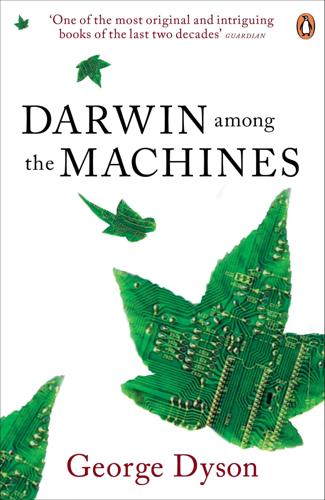
Darwin Among the Machines
by
George Dyson
Published 28 Mar 2012
Thanks to Esther, I met literary agent John “No Wasted Motion” Brockman in 1984, who, nine years later, with Katinka Matson, helped precipitate this book. William Patrick at Addison-Wesley accepted an ambiguous proposal, and Jeff Robbins had the patience to await a manuscript, followed by the efficiency as editor to produce a book without additional delay. Others, including Danny Hillis, William S. Laughlin, James Noyes, Patrick Ong, and Ann Yow, offered encouragement at different stages along the way. The builders of my boat designs kept me afloat. I owe the last sentence in this book, and more, to David Brower—archdruid, mountaineer, and editor of landmarks from In Wildness . . . to On the Loose.
…
The big questions—Is human intelligence a computable function? Are there algorithms for life?—may never be answered. But computable functions appear to be doing most of the work. “Non-computable functions may be the most common type of function in theory, but in practice they hardly ever come up,” Danny Hillis has explained. “In fact, it is difficult to find a well-defined example of a non-computable function that anybody wants to compute. This suggests that there is some deep connection between computability and the physical world and/or the human mind.”7 “On Computable Numbers” secured a Proctor Fellowship for its author, who went to Princeton University in 1937 to complete his doctoral thesis under Alonzo Church.
…
“Perhaps some day in the dim future, it will be possible to advance the computations faster than the weather advances,” hoped Richardson, “and at a cost less than the saving to mankind due to the information gained.”27 Richardson thereby anticipated massively parallel computing, his 64,000 mathematicians reincarnated seventy years later as the multiple processors of Danny Hillis’s Connection Machine. “We had decided to simplify things by starting out with only 64,000 processors,” explained Hillis, recalling how Richard Feynman helped him bring Lewis Richardson’s fantasy to life.28 Even without the Connection Machine, Richardson’s approach to cellular modeling would be widely adopted once it became possible to assign one high-speed digital computer rather than 64,000 human beings to keep track of numerical values and relations among individual cells.
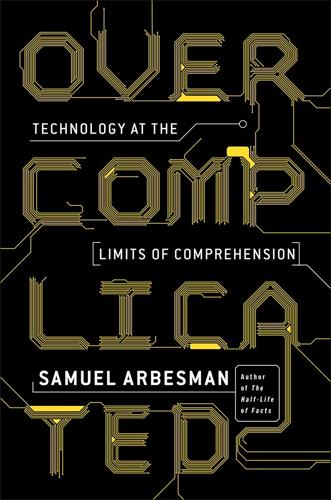
Overcomplicated: Technology at the Limits of Comprehension
by
Samuel Arbesman
Published 18 Jul 2016
Howard, “Fixing Broken Government: Put Humans in Charge,” The Atlantic, September 22, 2014, http://www.theatlantic.com/politics/archive/2014/09/fixing-broken-government-put-humans-in-charge/380309/?single_page=true. the writer Quinn Norton has noted: Quinn Norton, “Everything is Broken,” The Message, May 20, 2014, https://medium.com/message/81e5f33a24e1. Langdon Winner notes in his book: Winner, Autonomous Technology, 290–91. computer scientist Danny Hillis argues: Danny Hillis, “The Age of Digital Entanglement,” Scientific American, September 2010, 93. Take the so-called Flash Crash: Nick Bostrom, Superintelligence: Paths, Dangers, Strategies (Oxford, UK: Oxford University Press, 2014), 17. It is still not entirely clear, however, what caused the Flash Crash.
…
Wells came to believe late in life “that the human mind is no longer capable of dealing with the environment it has created.” Wells concluded this in 1945, discussing primarily human organizations and societies. This problem has become even more acute in recent years, through the development of computational technologies to a level that even Wells might have had difficulty imagining. The computer scientist Danny Hillis argues that we have moved from the Enlightenment to the Entanglement, at least when it comes to our technology: “Our technology has gotten so complex that we no longer can understand it or fully control it. We have entered the Age of Entanglement. . . . Each expert knows a piece of the puzzle, but the big picture is too big to comprehend.”
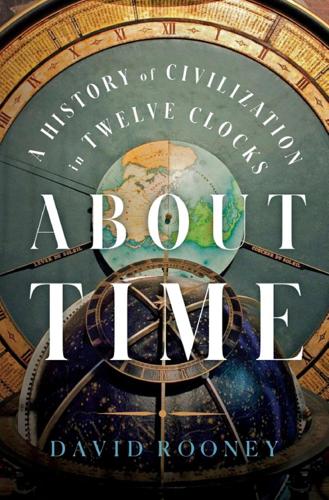
About Time: A History of Civilization in Twelve Clocks
by
David Rooney
Published 16 Aug 2021
The trend might be coming from the acceleration of technology, the short-horizon perspective of market-driven economics, the next-election perspective of democracies, or the distractions of personal multitasking. All are on the increase. Some sort of balancing corrective to the short-sightedness is needed—some mechanism or myth that encourages the long view and the taking of long-term responsibility, where “the long term” is measured at least in centuries.4 Brand, together with the computer designer Danny Hillis and other prominent thinkers, had become increasingly concerned that the year 2000 had progressively acted as a temporal mental barrier to the future. Brand asked, “How do we make long-term thinking automatic and common instead of difficult and rare? How do we make the taking of long-term responsibility inevitable?’
…
In his book outlining the Clock of the Long Now project, Stewart Brand said, “Ise is the world’s greatest monument to continuity—an unbroken lineage of structure, records, and tradition on a humid, earthquake-prone, volcanic island. Its ancient rites are alive and meaningful.”9 Alexander Rose, Danny Hillis and other Long Now Foundation members attended the 2013 rebuilding ceremony. Afterward, Rose wrote: I watched as Crown Princess Masako led a procession of Shinto priests carrying treasures from the old temple to the new . . . As part of Shinto ritual, this not only keeps the structures intact even when made out of relatively ephemeral materials, but it allows the master temple builder to train the next generation.10 In Osaka, for the 1970 international exposition, the Ise rebuilding ritual helped inspire the time capsule project.
…
Elsewhere in the time and frequency industry, I have been helped by countless experts, with Bob Cockshott, Charles Curry and John Pottle being particular stars. Moving from fast clocks to the slowest, I must thank the people of the Long Now Foundation for everything they have done for me since we first met in 2000. Stewart Brand, Danny Hillis and Brian Eno ignited in me a new way of thinking, and particular gratitude goes to Alexander Rose, who has been an inspiration throughout. I met Laura Williams in front of the Long Now clock the same year; Aluna, and Laura’s friendship, has helped sustain me ever since. And I am truly grateful to Jem Finer, whose projects—not just Longplayer, though that was how we met—have changed the way I see and experience the world.

Whole Earth: The Many Lives of Stewart Brand
by
John Markoff
Published 22 Mar 2022
What Negroponte called the Daily Me, the concept that each person’s newsfeed would be personalized, was seen as an inevitable future with little understanding of the darker reality that would become known as filter bubbles several decades later. One of the people Brand met during his three-month stay was Danny Hillis, a cerebral young supercomputer designer who was a protégé of Minsky’s. Several years earlier Hillis had founded Thinking Machines, a radical supercomputer company based on the idea of linking tens of thousands of small microprocessor chips to work on problems simultaneously. It would be a forerunner of today’s internet-centric computing—now described as cloud computing.
…
Momentarily, that left him nonplused while he tried to figure out what set his idea apart from a yachting club, or the Masonic Lodge for that matter. His musings would likely have remained fantasies, however, if not for the unexpected email that arrived in Brand’s inbox several months after his visit to the dentist. In it, Danny Hillis sketched out his vision of a mechanical clock designed to run for ten thousand years. Hillis, still making the world’s fastest supercomputers but increasingly frustrated with society’s seemingly ever-shortening time horizon, was searching for some way to encourage humanity to take a long view.
…
Midway between the Rockies and the Sierra Nevada, it had everything Brand was looking for—a 4,900-year-old tree, deep caves, and rock that would protect a mechanical clock for millennia. The closest town was Ely, Nevada, which was forty miles from Great Basin National Park. “I’m dying to just jump in a car and go investigate,” Brand wrote the board. At the end of September 1998, he drove his Range Rover across Nevada to Ely, where he met Danny Hillis and his then wife, Patti; Rose; Kennedy; Saffo; and Brewster Kahle. Kahle, a New Yorker who had studied computer science at MIT and then worked for Hillis at Thinking Machines, had come to the West Coast to create Alexa, an early search engine he had sold to Jeff Bezos for $250 million in Amazon stock.

From Counterculture to Cyberculture: Stewart Brand, the Whole Earth Network, and the Rise of Digital Utopianism
by
Fred Turner
Published 31 Aug 2006
In keeping with Brand and de Geus’s first discussions, the six semiannual Learning Conferences were designed to explore the dynamics of group learning. Brand staged the events in environments that he considered to be “learning systems” in their own right. One meeting took place at Biosphere 2 in the Arizona desert; another involved a visit to Danny Hillis’s Thinking Machines Corporation in Cambridge, Massachusetts; a third brought participants to the Esalen Institute in Big Sur. Like the Media Lab, these sites were meant to be both material and metaphorical. That is, they would allow participants to simultaneously study and engage with a “system” as it learned.
…
The notion of distributed learning, in which individuals learn together as elements in a system, was simultaneously congenial to Shell executives (“because that’s pretty much how they do their administration”), to cyberneticians such as Francisco Varela (because it seemed to describe his notion of “awakening systems”), to computer engineers like Danny Hillis (because it was a conceptual element of massively parallel computing), and to Brand’s own “‘access to tools’ approach to life.”11 Gradually, Brand later remembered, this rhetoric of distributed learning appeared to offer the answer to the questions that the founders of the conferences had first hoped to address: “We came to feel that the question of how you accelerate learning or adaptivity has already become answered—by distributed adaptivity or learning.
…
These members had been brought together over a number of years through the entrepreneurial bridging of structural holes by the principals, particularly by Stewart Brand. Early members, such as Douglas Engelbart, Mary Catherine Bateson, biologist Lynn Margulis, and ecologist Peter Warshall, represented Brand’s time at the Whole Earth Catalog and CoEvolution Quarterly and his journeys to SRI and Xerox PARC. Others, such as computer scientist Danny Hillis and sociologist Sherry Turkle, suggested Brand’s links to MIT. Together, the network members represented a handful of groups: computer technologists, economists and financial analysts, corporate executives, natural scientists, journalists, and technology-oriented artists. They also had a distinctly male and, as journalist Joel Garreau put it with consummate tact, “Anglo-American cast.”

The Master Algorithm: How the Quest for the Ultimate Learning Machine Will Remake Our World
by
Pedro Domingos
Published 21 Sep 2015
In this view, organisms are in a perpetual arms race with parasites, and sex helps keep the population varied, so that no single germ can infect all of it. If this is the answer, then sex is irrelevant to machine learning, at least until learned programs have to vie with computer viruses for processor time and memory. (Intriguingly, Danny Hillis claims that deliberately introducing coevolving parasites into a genetic algorithm can help it escape local maxima by gradually ratcheting up the difficulty, but no one has followed up on this yet.) Christos Papadimitriou and colleagues have shown that sex optimizes not fitness but what they call mixability: a gene’s ability to do well on average when combined with other genes.
…
Chapter One Nine Algorithms That Changed the Future, by John MacCormick (Princeton University Press, 2012), describes some of the most important algorithms in computer science, with a chapter on machine learning. Algorithms,* by Sanjoy Dasgupta, Christos Papadimitriou, and Umesh Vazirani (McGraw-Hill, 2008), is a concise introductory textbook on the subject. The Pattern on the Stone, by Danny Hillis (Basic Books, 1998), explains how computers work. Walter Isaacson recounts the lively history of computer science in The Innovators (Simon & Schuster, 2014). “Spreadsheet data manipulation using examples,”* by Sumit Gulwani, William Harris, and Rishabh Singh (Communications of the ACM, 2012), is an example of how computers can program themselves by observing users.
…
An evolved robot soccer team is described in “Evolving team Darwin United,”* by David Andre and Astro Teller, in RoboCup-98: Robot Soccer World Cup II, edited by Minoru Asada and Hiroaki Kitano (Springer, 1999). Genetic Programming III,* by John Koza, Forrest Bennett III, David Andre, and Martin Keane (Morgan Kaufmann, 1999), includes many examples of evolved electronic circuits. Danny Hillis argues that parasites are good for evolution in “Co-evolving parasites improve simulated evolution as an optimization procedure”* (Physica D, 1990). Adi Livnat, Christos Papadimitriou, Jonathan Dushoff, and Marcus Feldman propose that sex optimizes mixability in “A mixability theory of the role of sex in evolution”* (Proceedings of the National Academy of Sciences, 2008).
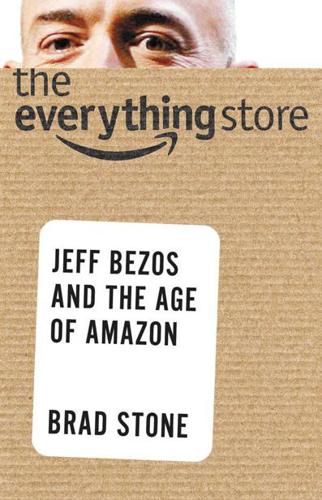
The Everything Store: Jeff Bezos and the Age of Amazon
by
Brad Stone
Published 14 Oct 2013
David Shaw came of age in the dawning era of powerful new supercomputers. He earned a PhD in computer science from Stanford in 1980 and then moved to New York to teach in Columbia’s computer science department. Throughout the early eighties, high-tech companies tried to lure him to the private sector. Inventor Danny Hillis, founder of the supercomputer manufacturer Thinking Machines Corporation and later one of Jeff Bezos’s closest friends, almost convinced Shaw to come work for him designing parallel computers. Shaw tentatively accepted the job and then changed his mind, telling Hillis he wanted to do something more lucrative and could always return to the supercomputer field after he got wealthy.
…
In the atrium of the building, there is a full-scale steampunk model of a Victorian-era spaceship as it might have been described in the fiction of Jules Verne, complete with a cockpit, brass controls, and nineteenth-century furnishings. Visitors can venture inside, sit on the velvet-covered seats, and imagine themselves as intrepid explorers in the time of Captain Nemo and Phileas Fogg. “To an imaginative child, it would look like an artifact,” says Bezos’s friend Danny Hillis. Like other great entrepreneurs, including Walt Disney, Henry Ford, and Steve Jobs, Bezos was turning imagination into reality, the fancies of his youth into actual physical things. “Space for Jeff is not a year 2000 or a year 2010 opportunity,” says Hillis. “It’s been a dream of humanity’s for centuries and it will continue to be one for centuries.
…
Defects that are invisible to the knowledgeable may be obvious to newcomers. The simplest solutions are the best. Repeating all these anecdotes isn’t rote monotony—it’s calculated strategy. “The rest of us try to muddle around with complicated contradictory goals and it makes it harder for people to help us,” says his friend Danny Hillis. “Jeff is very clear and simple about his goals, and the way he articulates them makes it easy for others, because it’s consistent. “If you look at why Amazon is so different than almost any other company that started early on the Internet, it’s because Jeff approached it from the very beginning with that long-term vision,” Hillis continues.

Artificial Unintelligence: How Computers Misunderstand the World
by
Meredith Broussard
Published 19 Apr 2018
Minsky-style creative chaos is fun and delightful and inspirational. It’s also dangerous. Minsky and his generation did not have the same attitudes toward safety that we know are important today. There was a kind of casual disregard for radiation safety, for example. Once, a computer scientist and former Minsky graduate student named Danny Hillis showed up to Minsky’s house with a radiation detector in his pocket. (Hillis, a supercomputer inventor, now runs the Long Now Foundation with Whole Earth Catalog founder Stewart Brand; the foundation is devoted to building a mechanical clock that will run for ten thousand years in a cave on a Texas ranch owned by Amazon founder Jeff Bezos.)
…
“Jamming GPS Signals Is Illegal, Dangerous, Cheap, and Easy.” Gizmodo, July 24, 2017. https://gizmodo.com/jamming-gps-signals-is-illegal-dangerous-cheap-and-e-1796778955. Hillis, W. Daniel. “Radioactive Skeleton in Marvin Minsky’s Closet.” Paper presented at the Web of Stories, n.d. https://webofstories.com/play/danny.hillis/174. Holovaty, Adrian. “A Fundamental Way Newspaper Sites Need to Change.” Holovaty.com, September 6, 2006. http://www.holovaty.com/writing/fundamental-change/. Holovaty, Adrian. “In Memory of Chicagocrime.org.” Holovaty.com, January 31, 2008. http://www.holovaty.com/writing/chicagocrime.org-tribute/.

The Sovereign Individual: How to Survive and Thrive During the Collapse of the Welfare State
by
James Dale Davidson
and
William Rees-Mogg
Published 3 Feb 1997
The beginning of something we may never understand"1 -Danny Hillis PREMONITIONS The coming of the year 2000 has haunted the Western imagination for the past thousand years. Ever since the world failed to end at the turn of the first millennium after Christ, theologians, evangelists, poets, and seers have looked to the end of this decade with an expectation that it would bring something momentous. No less an authority than Isaac Newton speculated that the world would end with the year 2000. Michel de Nostradamus, whose prophecies have been read by every generation since they were first 1 Danny Hillis, "The Millennium Clock," Wired, Special Edition, Fall 1995, p.48. 1 published in 1568, forecast the coming of the Third Antichrist in July 1999.2 Swiss psychologist Carl Jung, connoisseur of the "collective unconscious," envisioned the birth of a New Age in 1997.
…
The growing danger of crime, particularly embezzlement and undetectable theft, will make morality and honor among associates more crucial and highly valued than it was during the Industrial Era, particularly in its waning years. 312 Footnotes Chapter 1. The Transition of the Year 2000: The Fourth Stage of Human Society 1. Danny Hillis, "The Millennium Clock," Wired, Special Edition, Fall 1995,p.48. 2. Ericka Cheetham, The Final Prophecies of Nostradamus (New York: Putnam,1989), p.424. 3. Johan Huizinga, The Waning of the Middle Ages, trans. E Hopman (London:Penguin Books, 1990), p.172. 4. James George Frazer, The Golden Bough: A Study in Magic and Religion (New York: Macmillan, 1951), p.105. 5.
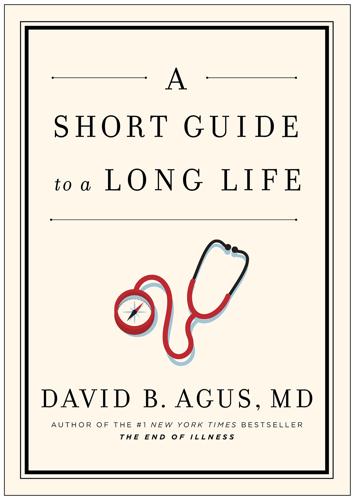
A Short Guide to a Long Life
by
David B. Agus
Published 7 Jan 2014
I also have to thank those who continue to support and inspire me on a regular basis, including Jeff Fager, Sandy Gleysteen, Gayle King, Jonathan LaPook, Chris Licht, Norah O’Donnell, Karolyn Pearson, David Rhodes, and Charlie Rose at CBS News, who empower me to be able to educate and inform. To Dominick Anfuso, Marc Benioff, Gerald Breslauer, Eli Broad, Bill Campbell, Michael Dell, Larry Ellison, Robert Evans, Murray Gell-Mann, Al Gore, Brad Grey, Davis Guggenheim, Danny Hillis, Walter Isaacson, Peter Jacobs, Clifton Leaf, Max Nikias, Fabian Oberfeld, Howard Owens, Shimon Peres, Maury Povich, Carmen Puliafito, Bruce Ramer, Sumner Redstone, Joe Schoendorf, Dov Seidman, Bonnie Solow, Steven Spielberg, Elle Stephens, Yossi Vardi, Jay Walker, David Weissman, and Neil Young: your mentorship, friendship, and advice are truly appreciated.
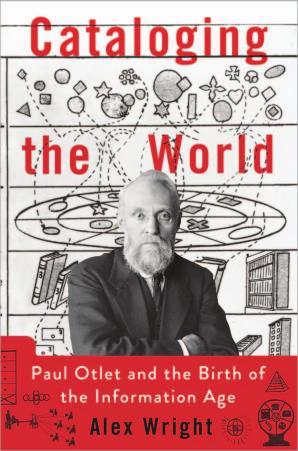
Cataloging the World: Paul Otlet and the Birth of the Information Age
by
Alex Wright
Published 6 Jun 2014
Technology alone, it seems, is not enough. Without an administrative operation equal to the task of organizing the world’s knowledge, such an endeavor seems doomed to incompletion. In a 2004 essay for The Edge, an online salon founded in 1996 by author and literary agent John Brockman, supercomputer pioneer Danny Hillis described his own vision for a new learning environment rooted in Semantic Web principles, to create a so-called Knowledge Web in which “humanity’s accumulated store of information will become more accessible, more manageable, and more useful.” The environment would include carefully classified metadata on a wide range of topics, creating a rich universe of links uniting a large corpus of information.
…
Contemporary evolutionary biologists tend to regard claims for cultural “evolution” with a degree of skepticism. That said, his invocation of an evolutionary paradigm for the propagation of networked information anticipates a stream of rhetoric that characterized the early years of the Web. In a 1998 article for Wired magazine, programmer Danny Hillis described the emergence of the contemporary global network in explicitly evolutionary terms. “We’re taking off,” he wrote. “We are not evolution’s ultimate product. There’s something coming after us, and I imagine it is something wonderful.”27 Kurzweil has suggested that advances in information technology have led humanity to the brink of an evolutionary event: the Singularity, a point at which we will witness “the merger of biological and nonbiological intelligence.”28 Otlet’s notion of “collective intelligence” prefigured a great deal of contemporary pro-Internet rhetoric.

Is the Internet Changing the Way You Think?: The Net's Impact on Our Minds and Future
by
John Brockman
Published 18 Jan 2011
A good question encourages answers that are grounded in experience but bigger than any experience alone. I wanted Edge’s contributors to think about the Internet, which includes but is a much bigger subject than the Web or an application on the Internet (or searching, browsing, and so forth, which are apps on the Web). Back in 1996, computer scientist and visionary Danny Hillis pointed out: “A lot of people think the Web is the Internet, and they’re missing something. The Web is the old media incorporated into the new medium.” He enlarges on that thought in the introduction. This year, I enlisted the aid of Hans Ulrich Obrist, curator of the Serpentine Gallery in London, and the artist April Gornik, one of the early members of the Reality Club, to help broaden the Edge conversation—or, rather, to bring it back to where it was in the late 1980s and early 1990s, when April gave a talk at a Reality Club meeting and discussed the influence of chaos theory on her work, and Benoit Mandelbrot showed up to discuss fractal theory.
…
All we do is keep close track of what the others are thinking and doing. Often we collaborate directly, but most of the time we don’t. Everyone in my guild has his or her own guild, each of which is largely different from mine. I’m probably not considered a member of some of them. My guild nowadays consists of Danny Hillis, Brian Eno, Peter Schwartz, Kevin Kelly, John Brockman, Alexander Rose, and Ryan Phelan. Occasionally we intersect institutionally via the Long Now Foundation, Global Business Network, or Edge.org. One’s guild is a conversation extending over years and decades. I hearken to my gang because we have overlapping interests, and my gang keeps surprising me.
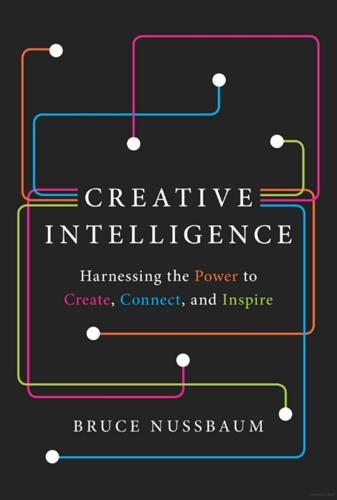
Creative Intelligence: Harnessing the Power to Create, Connect, and Inspire
by
Bruce Nussbaum
Published 5 Mar 2013
CRACKING THE CODE OF CREATIVITY I wasn’t the only one asking these kinds of questions. By the middle of the first decade of the twenty-first century, design thinking had become wildly popular. Ironically, it was during a discussion about design thinking and innovation that some of us came to see the limits of focusing on design alone. I had joined Danny Hillis at his Applied Minds studio in Glendale, California, on October 30, 2007, along with the big guns in design, design thinking, and innovation—Larry Keeley from Doblin, Roger Martin, dean of the Rotman School of Management at the University of Toronto, and Patrick Whitney at the IIT Institute of Design in Chicago.
…
CHAPTER 2 11 In 1992 BusinessWeek began supporting: Bruce Nussbaum, “The Best Product Designs of the Year,” BusinessWeek, June 7, 1992, http://www.businessweek.com/stories/1992-06-07/ winners-the-best-product-designs-of-the-year. 11 What is now called the International: The IDEA was originally called the Industrial Design Excellence Awards and changed in the late nineties to be more global. 11 In April 2006, the magazine teamed up with: Bruce Nussbaum, “The World’s Most Innovative Companies,” BusinessWeek, April 23, 2006, http://www.businessweek.com/stories/2006-04-23/ the-worlds-most-innovative-companies. 11 Then, in 2008, my team: Bruce Nussbaum, “S&P/BusinessWeek Global Innovation Index,” BusinessWeek, May 1, 2008, http://www.businessweek.com/stories/2008-05-01/ s-and-p-businessweek-global-innovation-indexbusinessweek-business-news-stock-market-and-financial-advice. 11 Between our many lists, the index: Bruce Nussbaum, “BusinessWeek Is Launching INside Innovation,” BusinessWeek, May 13, 2006, http://www.businessweek.com/stories/2006-05-13/ business-week-is-launching-inside-innovation-dot; http://www.designing-media.com/interviews/BruceNussbaum, accessed October 15, 2012. 13 Frustrated, I began asking around: personal record. 13 from Kaiser Permanente’s shift: Bruce Nussbaum, “The Power of Design,” BusinessWeek, May 17, 2004. 13 to P&G’s development of the Swiffer: Bruce Nussbaum, “Get Creative! How to Build Innovative Companies,” BusinessWeek, August 1, 2005. 13 Years after I initially began these conversations: personal record. 14 I had joined Danny Hillis: I’d been covering design for more than a decade by the time of this meeting and was on a first-name basis with most of those attending it. They were what management consultants called “thought leaders” in innovation and design. They were, in fact, among the leading thought leaders of the field in the world.

What to Think About Machines That Think: Today's Leading Thinkers on the Age of Machine Intelligence
by
John Brockman
Published 5 Oct 2015
Following this logic, we might conclude that there’s a primitive global brain, consisting not just of all connected devices but also of the connected humans using those devices. The senses of that global brain are the cameras, microphones, keyboards, location sensors of every computer, smartphone, and “Internet of Things” device. The thoughts of that global brain are the collective output of millions of individual contributing cells. Danny Hillis is said to have remarked, “Global consciousness is that thing responsible for deciding that decaffeinated coffeepots should be orange.” The meme spread—not universally, to be sure, but sufficiently that the pattern propagates. News, ideas, and images now propagate across the global brain in seconds rather than years via search engines and social media.
…
THOUGHT-STEALING MACHINES MAXIMILIAN SCHICH Art historian; associate professor for art and technology, University of Texas, Dallas Machines increasingly do things we previously considered thinking, but that we don’t do anymore because now machines do them. I stole this thought more or less accurately from Danny Hillis, father of the Connection Machine and the Knowledge Graph. Stealing thoughts is a common activity in the thought processes of both humans and machines. Indeed, when we humans think, much of the content of our thoughts comes from past experience or the documented experience of others. Very rarely do we come up with something completely new.
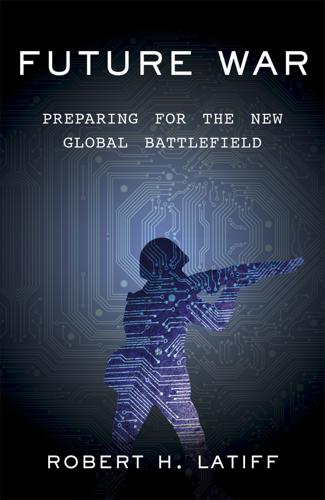
Future War: Preparing for the New Global Battlefield
by
Robert H. Latiff
Published 25 Sep 2017
Ubiquitous personal electronics have already changed behavior in fundamental ways. What will be the societal impact of self-driving automobiles, or artificial intelligence? Do our choices have environmental consequences? If the situation of dizzying complexity weren’t already bad enough, we have been moving steadily into an era that computer scientist Danny Hillis refers to as “entanglement.” As he defines it, entanglement refers to the fact that our systems are becoming ever more complex as well as ever more connected to one another. While the behavior of individual components may be computable and respond in predictable ways, that of the collection is too complicated to calculate.
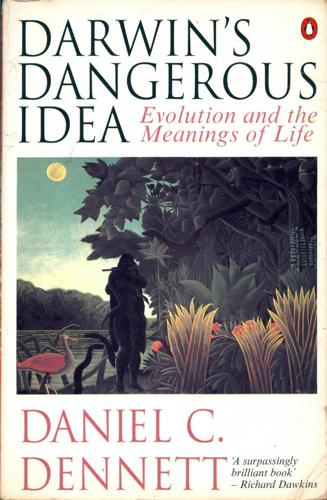
Darwin's Dangerous Idea: Evolution and the Meanings of Life
by
Daniel C. Dennett
Published 15 Jan 1995
Many others answered crucial questions, and clarified my thinking in {14} dozens of conversations: Ron Amundsen, Robert Axelrod, Jonathan Bennett, Robert Brandon, Madeline Caviness, Tim Clutton-Brock, Leda Cosmides, Helena Cronin, Arthur Danto, Mark De Voto, Marc Feldman, Murray Gell-Mann, Peter Godfrey-Smith, Steve Gould, Danny Hillis, John Holland, Alastair Houston, David Hoy, Bredo Johnsen, Stu Kauffman, Chris Langton, Dick Lewontin, John Maynard Smith, Jim Moore, Roger Penrose, Joanne Phillips, Robert Richards, Mark and Matt (the Ridley conspecifics), Dick Schacht, Jeff Schank, Elliot Sober, John Tooby, Robert Trivers, Peter Van Inwagen, George Williams, David Sloan Wilson, Edward O.
…
To them, this gift from outer space will exhibit an utterly mysterious regularity, totally beyond all analytic probes, unless they hit upon the idea that each box contains a description of a world, and that the descriptions are of the same world. It is the fact that each box bears multifarious semantic relationships to the same things, though expressed in different "terminology" and differently axiomatized, that grounds the regularity. When I tried this thought experiment out on Danny Hillis, creator of the Connection Machine, he thought immediately of a cryptographic "solution" to the puzzle, and then granted that my solution could be profitably viewed as a special case of his solution: "Al and Bo were using the world as a 'one-time pad!'" — an apt allusion to a standard technique of encryption.
…
Eigen suggests that there is a reason why there are four letters, not two, but I am not going to pass it on. Perhaps you can figure out for yourself what it might be before seeing what Eigen says. You already have at your fingertips the relevant principles of engineering to give it a good shot. 5. Danny Hillis, the creator of the Connection Machine, once told me a story about some computer scientists who designed an electronic component for a military application (I think it was part of a guidance system in airplanes). Their prototype had two circuit boards, and the top one kept sagging, so, casting about for a quick fix, they spotted a brass doorknob in the lab which had just the right thickness.
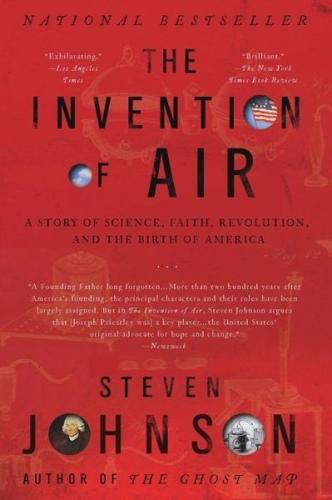
The Invention of Air: A Story of Science, Faith, Revolution, and the Birth of America
by
Steven Johnson
Published 26 Dec 2008
First, NYU’s School of Journalism, for letting me teach a graduate seminar on Cultural Ecosystems, and my students there who contributed so many helpful ideas (and who, I’m thankful to report, shot down more than a few of my less helpful ones). My friends at the Long Now Foundation—Stewart Brand, Kevin Kelly, Brian Eno, Danny Hillis, and Alexander Rose—were kind enough to invite me to discuss the “long zoom” approach to cultural history at one of their seminars in long-term thinking in 2007. I was also lucky enough to be invited to discuss these issues onstage with Brian at the Institute of Contemporary Arts in London. I’m also indebted to Larry Lessig for the Jefferson quote at the beginning of this book, an early link that led me to one of the book’s major themes.
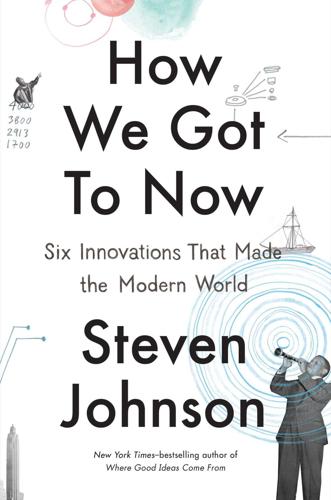
How We Got to Now: Six Innovations That Made the Modern World
by
Steven Johnson
Published 28 Sep 2014
We know from carbon dating (and tree rings) that some of them are more than five thousand years old—the oldest living things on the planet. At some point, several years from now, a clock will be buried in the soil beneath those pines, a clock designed to measure time on the scale of civilizations, not seconds. It will be—as its primary designer, the computer scientist Danny Hillis, puts it—“a clock that ticks once a year. The century hand advances once every 100 years, and the cuckoo comes out on the millennium.” It is being engineered to keep time for at least ten thousand years, roughly the length of human civilization to date. It is an exercise in a different kind of time discipline: the discipline of avoiding short-term thinking, of forcing yourself to think about our actions and their consequences on the scale of centuries and millennia.
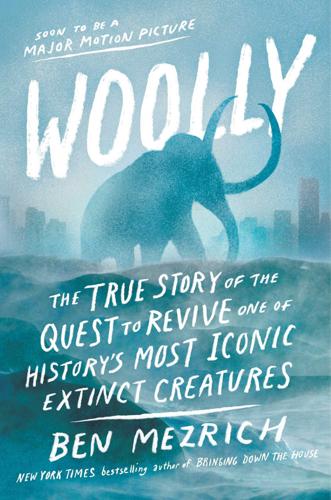
Woolly: The True Story of the Quest to Revive History's Most Iconic Extinct Creature
by
Ben Mezrich
Published 3 Jul 2017
The Whole Earth Catalogue had been the launch of a revolution, and no less a tech luminary than Steve Jobs had once likened it to “Google in print.” Brand’s current project, the Long Now Foundation, was no less ambitious. A philanthropic think tank, which Brand had created with computer scientist Danny Hillis, Long Now’s goal was to look forward over the next ten thousand years. Instead of focusing on problems in the present, the idea was to see the world on a much longer time frame. One of the Long Now’s initiatives was to create a permanent database of the world’s seven thousand known languages. Another was “The Clock of The Long Now”—a three-hundred-foot-tall timepiece built in a mountain on Amazon founder Jeff Bezos’s Texas property, to keep exact track of the next ten thousand years.
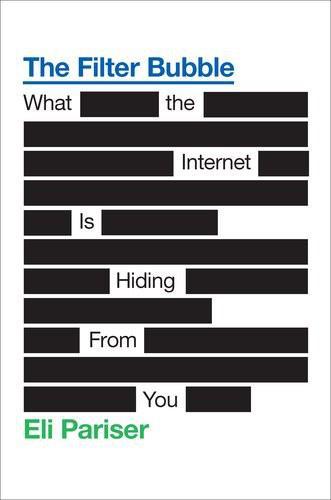
The Filter Bubble: What the Internet Is Hiding From You
by
Eli Pariser
Published 11 May 2011
There’s plenty to be said for this approach, but it’s worth remembering the downside: Machines may be able to see results without models, but humans can’t understand without them. There’s value in making the processes that run our lives comprehensible to the humans who, at least in theory, are their beneficiaries. Supercomputer inventor Danny Hillis once said that the greatest achievement of human technology is tools that allow us to create more than we understand. That’s true, but the same trait is also the source of our greatest disasters. The more the code driving personalization comes to resemble the complexity of human cognition, the harder it’ll be to understand why or how it’s making the decisions it makes.
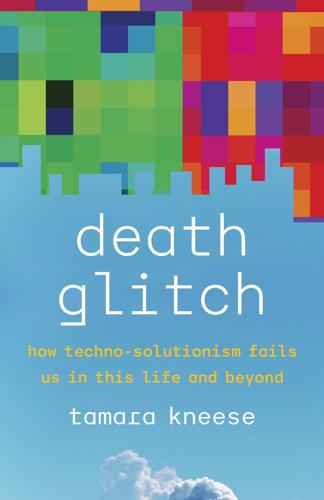
Death Glitch: How Techno-Solutionism Fails Us in This Life and Beyond
by
Tamara Kneese
Published 14 Aug 2023
The late 1960s and 1970s saw the establishment of “trendcasting” as a field and “futurist” as a job category.43 Although IFTF is officially a nonprofit organization, it partners with major corporations and wealthy clients to make predictions about the future of technology to help guide investments.44 IFTF shares some infrastructural and spiritual affinities with the Long Now Foundation. Based in San Francisco and founded by Stewart Brand and the computer scientist Danny Hillis in 1996, the foundation emerged from Brand’s 1960s hippie technologist Whole Earth Catalog. The experimental musician Brian Eno coined the phrase “the long now” as a way of unsettling startup culture’s accelerationism, expanding and slowing down the pace of technological production. Similar to the Whole Earth Catalog, the Long Now unites back-to-the-land communalism and libertarian-tinged techno-utopianism.
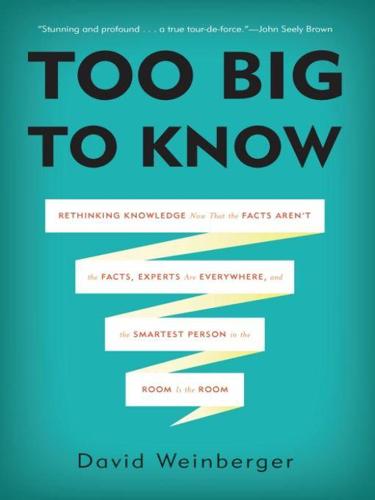
Too Big to Know: Rethinking Knowledge Now That the Facts Aren't the Facts, Experts Are Everywhere, and the Smartest Person in the Room Is the Room
by
David Weinberger
Published 14 Jul 2011
Some facts and ideas in Carr’s book inevitably came from similar sorts of interchanges. Thought is never private. Nor should it be. When Carr’s initial article came out in The Atlantic, there was some wonderful discussion of it among the elite set of thinkers—including Carr—who converse at Edge.org.14 Danny Hillis, a computing pioneer, agrees that something is making us stupid, but thinks that the “the flood of information” is the culprit. He also points to the role of politics. The writer Kevin Kelly wonders whether Nietzsche’s prose “changed from arguments to aphorisms” because he started using a typewriter, as Carr says, or if it was because “Nietzsche was ill and dying.”

Our Final Invention: Artificial Intelligence and the End of the Human Era
by
James Barrat
Published 30 Sep 2013
We’re now using programs to make much faster computers so the process can run much faster. That’s what’s so confusing—technologies are feeding back on themselves; we’re taking off. We’re at that point analogous to when single-celled organisms were turning into multi-celled organisms. We are amoebas and we can’t figure out what the hell this thing is that we’re creating. —Danny Hillis, founder of Thinking Machines, Inc. You and I live at an interesting and sensitive time in human history. By about 2030, less than a generation from now, it could be our challenge to cohabit Earth with superintelligent machines, and to survive. AI theorists return again and again to a handful of themes, none more urgent than this one: we need a science for understanding them.
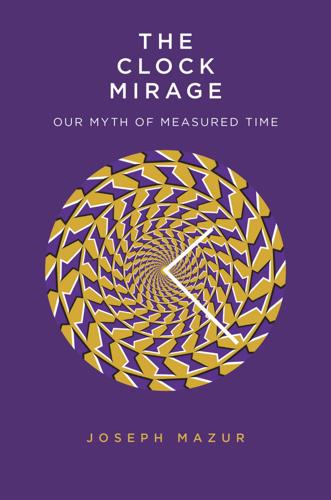
The Clock Mirage: Our Myth of Measured Time
by
Joseph Mazur
Published 20 Apr 2020
So what, then, is the meaning of time? 2 RINGING BELLS, BEATING DRUMS (USE OF TIME) I want to build a clock that ticks once a year. The century hand advances once every 100 years, and the cuckoo comes out on the millennium. I want the cuckoo to come out every millennium for the next 10,000 years. —Danny Hillis, inventor of the 10,000 Year Clock By the end of the twentieth century clocks were everywhere. If you walked along any busy city street, you were never far from scanning glances of clocks. Subway clocks in New York City were centrally calibrated, as were many street clocks of Paris and London.

More Joel on Software
by
Joel Spolsky
Published 25 Jun 2008
Think about what happened to poor Marimba. They launched their company with infinite VC in the days of hyper-Java hype, having lured the key developers from the Java team at Sun. They had a 260 More from Joel on Software CEO, Kim Polese, who was brilliant at public relations; when she was marketing Java, she had Danny Hillis making speeches about how Java was the next step in human evolution; George Gilder wrote these breathless articles about how Java was going to completely upturn the very nature of human civilization. Compared to Java, we were to believe, monotheism, for example, was just a wee blip. Polese is that good.
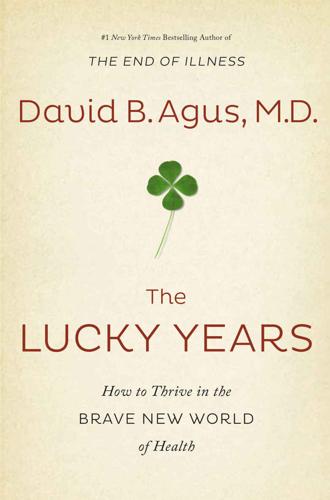
The Lucky Years: How to Thrive in the Brave New World of Health
by
David B. Agus
Published 29 Dec 2015
Thank you for pushing my thinking forward and your work in figuring out better ways to understand and treat disease. To my science mentors, collaborators, and friends Andrea Armani, Anthony Atala, Anna Barker, Paul Davies, Scott Fraser, Sam Gambhir, Murray Gell-Mann, Inderbir Gill, Dana Goldman, Danny Hillis, Cliff Hudis, Carl Kesselman, Parag Mallick, Franziska Michor, Vincent Miller, Larry Norton, Carmen Puliafito, Michael Quick, Chris Rose, Howard Scher, P. K. Shah, Jeff Trent, and Yannis Yortsos. I have the privilege of seeing the breaking health and technology information daily through my involvement with CBS News.

Life After Google: The Fall of Big Data and the Rise of the Blockchain Economy
by
George Gilder
Published 16 Jul 2018
When a supercomputer defeats a man in a game of chess or Go, the man is using maybe fourteen watts of power, while the computer and its networks are tapping into the gigawatt clouds on the Columbia. In the age of Big Data, the von Neumann bottleneck has philosophical implications. The more knowledge that is put into a von Neumann machine, the bigger and more crowded its memory, the further away its average data address, and the slower its functioning. Danny Hillis, of the erstwhile Thinking Machines, writes, “This inefficiency remains no matter how fast we make the processor, because the length of the computation becomes dominated by the time required to move data between processor and memory.” That span, traveled in every step in the computation, is governed by the speed of light, which on a chip is around nine inches a nanosecond—a significant delay on chips that now bear as much as sixty miles of tiny wires.
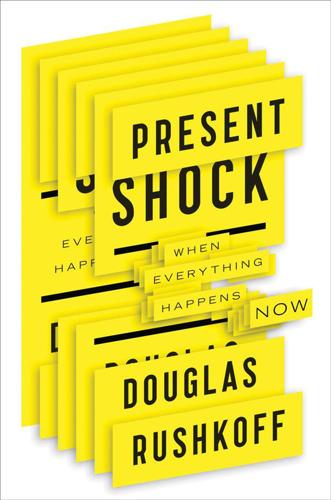
Present Shock: When Everything Happens Now
by
Douglas Rushkoff
Published 21 Mar 2013
Or throwing a plastic bottle into the trash because the recycle bin is thirty seconds out of our way—even though the plastic will become part of the planet’s landfill for hundreds of years until it decomposes into toxic chemicals for hundreds or thousands more. For Brand, the solution is to expand our awareness of the larger, slower cycles. He is working with inventor Danny Hillis to build a 10,000-year clock—a clock of the “long now” that changes our orientation to time. His hope is that by beholding this tremendous time-keeping structure in the desert (itself the product of a multigenerational effort), we will be able to experience or at least perceive the bigger cycles that evade us in our daily schedules.
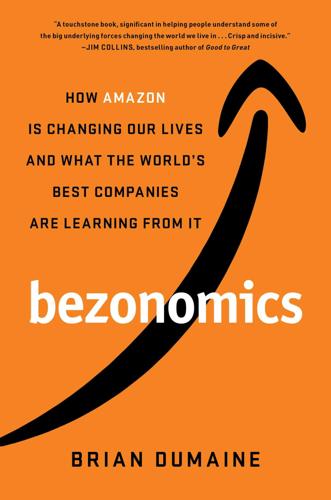
Bezonomics: How Amazon Is Changing Our Lives and What the World's Best Companies Are Learning From It
by
Brian Dumaine
Published 11 May 2020
The clock will tick once a year, its century hand will advance once every one hundred years, and a cuckoo will come out on the millennium. A mechanical computer will calculate more than 3.5 million different melodies that the clock’s chimes will play over the centuries. The clock project, which the foundation says has no public completion date, is the brainchild of Bezos’s friend Danny Hillis, a pioneer in parallel supercomputers and the creative force at Disney’s Imagineering division—he once designed a full-sized dinosaur to saunter around Disney’s theme parks. In 1996, he and Stewart Brand, a biologist, cultural pioneer, and the editor of the 1960s bible Whole Earth Catalog, launched a nonprofit to build the clock.
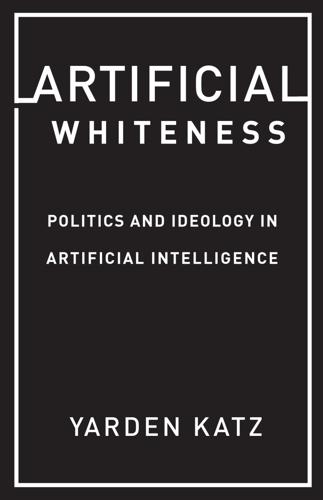
Artificial Whiteness
by
Yarden Katz
Fred Turner describes how individuals such as Stewart Brand (of Whole Earth Catalog fame) brought together people from the corporate world, academia, the military, and the media around themes of self-organization, cybernetic control, networks, and distributed learning: “The notion of distributed learning, in which individuals learn together as elements in a system, was simultaneously congenial to Shell executives (‘because that’s pretty much how they do their administration’), to cyberneticians such as Francisco Varela (because it seemed to describe his notion of ‘awakening systems’), to computer engineers like Danny Hillis (because it was a conceptual element of massively parallel computing), and to Brand’s own ‘access to tools’ approach to life.” Turner, From Counterculture to Cyberculture: Stewart Brand, the Whole Earth Network, and the Rise of Digital Utopianism (Chicago: University of Chicago Press, 2010), 183.
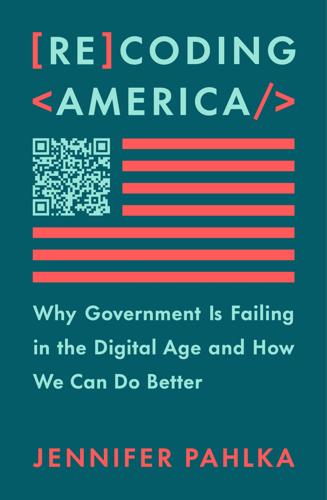
Recoding America: Why Government Is Failing in the Digital Age and How We Can Do Better
by
Jennifer Pahlka
Published 12 Jun 2023
I was fortunate to know him, and I was heartbroken at his passing, as were the thousands of others he touched with his inspiring leadership. I was equally fortunate to work with Josh Marcuse, Bess Dopkeen, Michael McQuade, Eric Schmidt, Milo Medin, Richard Murray, Trae Stephens, Neil deGrasse Tyson, Eric Lander, Gilman Louie, Marnie Levine, Adam Grant, Danny Hillis, Ben FitzGerald, and many others in and around the Department of Defense. Jordan Blashek and the team at America’s Frontier Fund continue to inspire me as they tackle state capacity at the intersection of national security and economic revitalization. Just when I thought I was retiring, I had the honor of working alongside many inspiring public servants at the State of California, including Yolanda Richardson, Amy Palmer, Amy Tong, and Mike Wilkening.
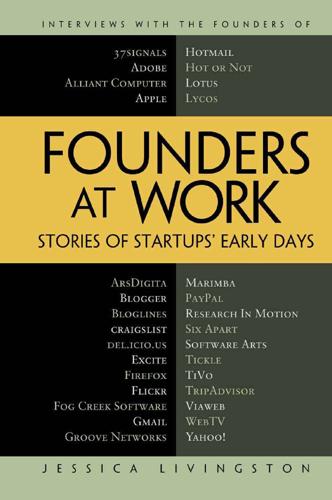
Founders at Work: Stories of Startups' Early Days
by
Jessica Livingston
Published 14 Aug 2008
Once captured, pages visited by users would then be “donated” to the related nonprofit Internet Archive, to help build a history of the Web. Alexa was acquired by Amazon in 1999. Kahle continues to run the Internet Archive. Livingston: You were one of the first members of the Thinking Machines team. What number employee were you? Kahle: I was not one of the two founders—they were Danny Hillis and Sheryl Handler. I was on the project team at MIT, so when we started the company, anybody from that team that wanted to come came. There were three or four of us. We had been working on it for a couple years before there was a company. Livingston: Tell me about some big things back in the Thinking Machines days that helped pave the way for WAIS.
…
Most people don’t have mentors. They say, “Well, I’ve had influential teachers. I’ve learned a lot from this person.” But they don’t think of it as a mentor. A mentor is a life guide, somebody that you might work with, but somebody who is helpful toward watching bigger issues about things that guide your life. Danny Hillis, who was 4 years older and whom I worked for at MIT and Thinking Machines, has been a guide and a help ever since. The other was Bill Dunn. I found those two men, both being very kind and smart, had the ability to know what was going to happen—even though they had way too little information. I’d always sort of note down their wild ideas and think, “Did they come about?”

Utopia Is Creepy: And Other Provocations
by
Nicholas Carr
Published 5 Sep 2016
“If a flush is not enough, a wireless button on the door activates a bidet and drying.” Tacked up beside that button, apparently for entertainment purposes, is a sheet of paper with “a geek quiz that changes every few weeks and asks technical questions about testing programming code for bugs.” I’m reminded of what Danny Hillis, the distinguished computer scientist whose work on parallel processing paved the way for Google’s computer system, once said about the human race: We’re the metabolic thing, which is the monkey that walks around, and we’re the intelligent thing, which is a set of ideas and culture. And those two things have coevolved together, because they helped each other.

The Deep Learning Revolution (The MIT Press)
by
Terrence J. Sejnowski
Published 27 Sep 2018
There is also no distinction between software and hardware in neural networks. Learning takes place by making changes to the hardware. Starting in the 1980s, when clusters of computers were assembled in one rack, digital computers have become massively parallel. One of the earliest parallel computers was the Connection Machine, designed by Danny Hillis in 1985 and sold by Thinking Machines, Inc. An engineer and inventor, Hillis trained at MIT when it was becoming clear that much more computational power would be needed to make artificial intelligence achieve solutions to immensely complex real-world problems. As the number of transistors on a computer chip continued to increase according to Moore’s law in the 1990s, it became possible to put many processing units on the same chip, many chips on the same board, many boards in the same cabinet, and many cabinets in the same room—with the result that today the fastest computers on the planet have millions of cores and can achieve many millions of billions of operations per second.
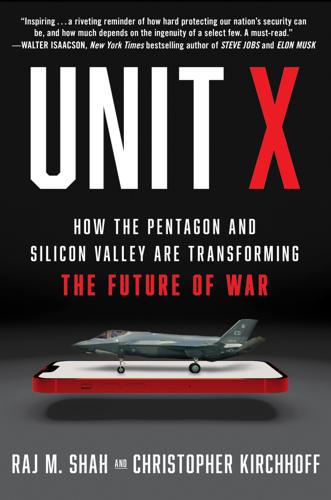
Unit X: How the Pentagon and Silicon Valley Are Transforming the Future of War
by
Raj M. Shah
and
Christopher Kirchhoff
Published 8 Jul 2024
“Ash” Carter; Chairman of the Joint Chiefs of Staff Marty Dempsey, who told us to “go slay the Silicon Dragon”; Deputy Secretary Bob Work and his indefatigable team of Ylli Bajraktari (our true brother in arms), Ryan Farris, and Reuben Sorensen; Vice Chairmen of the Joint Chiefs Sandy Winnefeld and Paul Selva; NSA Directors General Keith Alexander, General Paul Nakasone, and Admiral Mike Rogers; Rear Admiral and former Naval Special Warfare commander Wyman Howard; General David Goldfein, Jim Baker, Sam Neill, and Matt Cordova on the Joint Staff; Josh Marcuse, the inaugural executive director of the Defense Innovation Board, his able deputy Mike Gable, and all the board’s original members (Chair Eric Schmidt, Jeff Bezos, Adam Grant, Danny Hillis, Reid Hoffman, Walter Isaacson, Eric Lander, Marne Levine, Michael McQuade, Admiral William McRaven, Milo Medin, Richard Murray, Jennifer Pahlka, Cass Sunstain, and Neil deGrasse Tyson); Chris Lynch, inaugural head of the Defense Digital Service; and so many others, including Ylber Bajraktari, Wyn Elder, Snake Clarke, Jeremy Bash, Bill Greenwalt, Jason Matheny, and Will Roper.

Nerds on Wall Street: Math, Machines and Wired Markets
by
David J. Leinweber
Published 31 Dec 2008
But they all do it using wetware that we understand well enough to appreciate the crucial lessons for the next generation of AI paradigms. There is massive parallelism. Computation is going on all over the place, not in one instruction stream. Brains do not have accumulators. AI went parallel. Thinking Machines, founded by computational superstar Danny Hillis (son-in-law of Marvin Minsky, the pope of symbolic AI), gathered some of the leading lights to build and program massive machines with up to 64K (65,536) processors. That is a lot more than one, but still a lot less than the 100 billion neurons in the brain. You don’t need a machine with a billion processors to try out solutions that would use them.
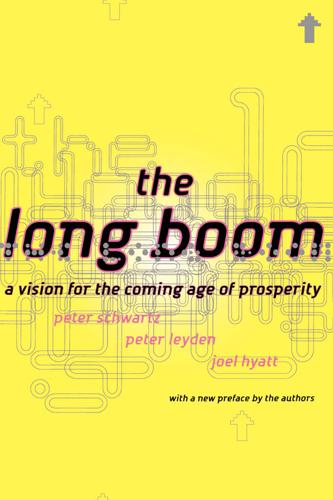
The Long Boom: A Vision for the Coming Age of Prosperity
by
Peter Schwartz
,
Peter Leyden
and
Joel Hyatt
Published 18 Oct 2000
Collyns and O'Brien also gave feedback to the manuscript, along with Katherine Fulton, a GBN principal, and Steven Weber, a professor of political science at the University of California Berkeley and an independent consultant with GBN. The Global Business Network of interesting minds also contributed directly or indirectly. Those who were especially helpful include Eric Drexler, founder of the Foresight Institute; Amory Lovins, of the Rocky Mountain Institute; Bo Ekman, Chairman of Nextwork; Danny Hillis, Disney Fellow; Doug Carlston, founder of Broderbund Software; and Brian Eno, musician and artist. Individuals from several GBN member companies were especially supportive of the ideas: Johan nic Void of Statoil, Goren Lindahl of ABB, the European-based energy firm, Doug Glen of Mattel, and Goren Collert of Swedbank.

Machines of Loving Grace: The Quest for Common Ground Between Humans and Robots
by
John Markoff
Published 24 Aug 2015
During the 1990s, in addition to writing his second book, he took two sabbaticals in an effort to hurry the process of perfecting the ability to permit machines to see and understand their environments so they could navigate and move freely. The first sabbatical he spent in Cambridge, Massachusetts, at Danny Hillis’s Thinking Machines Corporation, where Moravec hoped to take advantage of a supercomputer. But the new supercomputer, the CM-5, wasn’t ready. So he contented himself with refining his code on a workstation while waiting for the machine. By the end of his stay, he realized that he only needed to wait for the power of a supercomputer to come to his desktop rather than struggle to restructure his code so it would run on a special-purpose machine.

The Age of Spiritual Machines: When Computers Exceed Human Intelligence
by
Ray Kurzweil
Published 31 Dec 1998
Hey, I don’t have one, remember I’m stuck in 1999. TOO BAD. I GUESS I’LL JUST HAVE TO VISIT YOU MYSELF THEN. “Smaller, more powerful chips allow me to have a smaller head.” CHAPTER ELEVEN 2029 I’m as fond of my body as anyone else, but if I can be 200 with a body of silicon, I’ll take it. —Danny Hillis The Computer Itself A $1,000 unit of computation (in circa-1999 dollars) has the computing capacity of approximately 1,000 human brains (1,000 times 20 million billion—that is, 2 times 1019—calculations per second). Of the total computing capacity of the human species (that is, all human brains) combined with the computing technology humans initiated the creation of, more than 99 percent is nonhuman.1 The vast majority of “computes” of nonhuman computing is now conducted on massively parallel neural nets, much of which is based on the reverse engineering of the human brain.
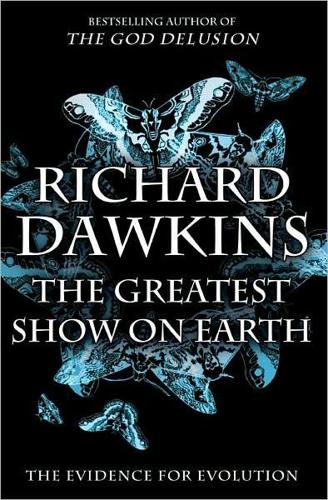
The Greatest Show on Earth: The Evidence for Evolution
by
Richard Dawkins
Published 21 Sep 2009
Detailed DNA comparisons will fill in all the gaps in our knowledge about the actual evolutionary relatedness of every species to every other: we shall know, with complete certainty, the entire family tree of all living creatures.* Goodness knows how we’ll plot it; it won’t fit on any practical-sized sheet of paper. ‘Hodgkin’s Law’ The largest-scale attempt in that direction so far has been made by a group associated with David Hillis, brother of Danny Hillis who pioneered one of the first supercomputers. The Hillis plot makes the tree diagram more compact by wrapping it around in a circle. You can’t see the gap, where the two ends almost meet, but it lies between the ‘bacteria’ and the ‘archaea’. To see how the circular plot works, look at the greatly stripped-down version tattooed on the back of Dr Clare D’Alberto of the University of Melbourne, whose enthusiasm for zoology is more than skin deep.

Algorithms to Live By: The Computer Science of Human Decisions
by
Brian Christian
and
Tom Griffiths
Published 4 Apr 2016
So there’s a lot to look forward to in being that late-afternoon restaurant regular, savoring the fruits of a life’s explorations. 3 Sorting Making Order Nowe if the word, which thou art desirous to finde, begin with (a) then looke in the beginning of this Table, but if with (v) looke towards the end. Againe, if thy word beginne with (ca) looke in the beginning of the letter (c) but if with (cu) then looke toward the end of that letter. And so of all the rest. &c. —ROBERT CAWDREY, A TABLE ALPHABETICALL (1604) Before Danny Hillis founded the Thinking Machines corporation, before he invented the famous Connection Machine parallel supercomputer, he was an MIT undergraduate, living in the student dormitory, and horrified by his roommate’s socks. What horrified Hillis, unlike many a college undergraduate, wasn’t his roommate’s hygiene.

Coders: The Making of a New Tribe and the Remaking of the World
by
Clive Thompson
Published 26 Mar 2019
This harmonic resonance between magic and code is why teenaged nerd programmers of the early ’80s hybridized so fluently with Dungeons & Dragons (a game that merged fantasy with probabilistic dice-rolling math), or the spell-uttering wizards of Tolkien’s epics. In the ’60s, when programmers invented a type of code that would constantly run in the background, they called it a “daemon.” When he created the computer language Perl, Larry Wall, the computer scientist, included a function called “Bless.” As the coder Danny Hillis once noted, “A few hundred years ago in my native New England, an accurate description of my occupation would have gotten me burned at the stake.” This sense of magical control can be intoxicating and fun; it lends itself frequently to a sort of starry-eyed idealism. And it can also lead, particularly in younger coders—who’ve yet to be humbled by life and their own screw-ups—to some epic hubris.

WTF?: What's the Future and Why It's Up to Us
by
Tim O'Reilly
Published 9 Oct 2017
This led to a qualitative difference in how quickly information was transmitted, and magnified its impact. Now news, ideas, and images propagate across the global brain in seconds rather than weeks or months. In one sense, this is nothing new. There has always been a global brain. As recounted by Jeff Bezos in a 2005 talk at my Emerging Technology Conference, computer scientist Danny Hillis once said to him that “global consciousness is that thing that decided that decaffeinated coffeepots should be orange.” The idea that “orange means decaffeinated” originated during World War II, when Sanka promoted its decaffeinated coffee brand by giving away orange-rimmed coffeepots to restaurants across America.

Turing's Cathedral
by
George Dyson
Published 6 Mar 2012
Gabriella Bollobás translated a large body of correspondence, interpreting not only the nuances of the Hungarian language, but also the emotional and intellectual context of Budapest at that time. Belá Bollobás, Marion Brodhagen, Freeman Dyson, Joseph Felsenstein, Holly Given, David Alan Grier, Danny Hillis, Verena Huber-Dyson, Jennifer Jacquet, Harris Mayer, and Alvy Ray Smith offered comments on early drafts. Akrevoe Kondopria Emmanouilides, who typed and proofread the Institute for Advanced Study Electronic Computer Project’s progress reports as a teenager in 1946, found errors that might otherwise have been missed.

The Code: Silicon Valley and the Remaking of America
by
Margaret O'Mara
Published 8 Jul 2019
Jane Bortnick, ed., Transcription of “Information and Communications,” Congressional Clearinghouse on the Future, Chautauquas for Congress, March 1979, Congressional Research Service, Library of Congress, June 12, 1979; Cindy Skrzycki, “The Tekkie on the Ticket,” The Washington Post, October 18, 1992, H1; Interview with W. Daniel Hillis, “Al Gore, ‘the Ozone Man,’” Web of Stories, https://www.webofstories.com/play/danny.hillis/173, archived at https://perma.cc/KGK5-NKWB. 15. High Performance Computing Act of 1991, P.L. 102-194. A decade later, as a sitting Vice President running against George W. Bush for the top job, Gore inelegantly declared that he “took the initiative in creating the Internet,” precipitating widespread mockery by political opponents, pundits, and late-night comedians.
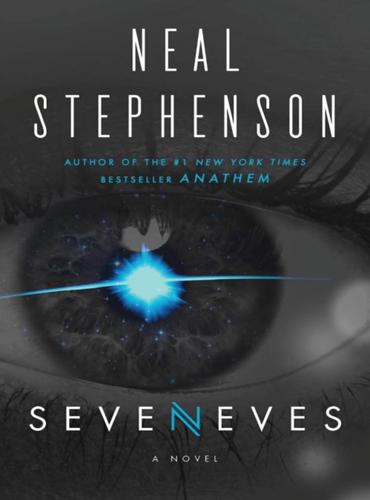
Seveneves
by
Neal Stephenson
Published 19 May 2015
Thus by late 2006 I had come up with the basic premise of Seveneves. So the first acknowledgment goes to Blue Origin, which was founded circa 2000 by Jeff Bezos under the name Blue Operations LLC and where I had many interesting early conversations with him and other people involved with the company, including Jaime Taaffe, Maria Kaldis, Danny Hillis, George Dyson, and Keith Rosema. It was from Keith that I first heard the idea for the multilayered emergency shelter bubble that appears in this book under the name of Luk. Some of the Baikonur material is very freely adapted from the reminiscences and photographs of George Dyson, Esther Dyson, and Charles Simonyi.
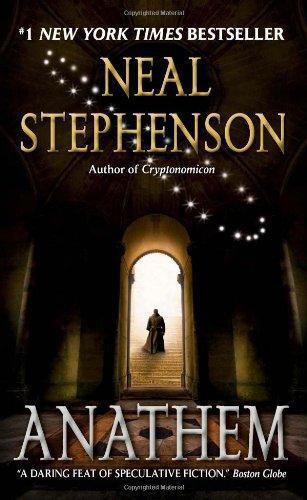
Anathem
by
Neal Stephenson
Published 25 Aug 2009
“It makes you wonder about the Cousins,” I said, thinking back to a wild notion that Arsibalt had raised last night: that the Cousins might have come, not just from another solar system, but from another cosmos. “Yes,” Criscan said, “it makes you wonder about the Cousins.” ACKNOWLEDGMENTS ANATHEM COULD NOT HAVE been written had the following not come first: the Millennium Clock project being carried out by Danny Hillis and his collaborators at the Long Now Foundation, including Stewart Brand and Alexander Rose. a philosophical lineage that can be traced from Thales through Plato, Leibniz, Kant, Gödel, and Husserl. the Orion project of the late 1950s and early 1960s. The author is, therefore, indebted to many more people than can comfortably be listed on a traditional acknowledgments page.
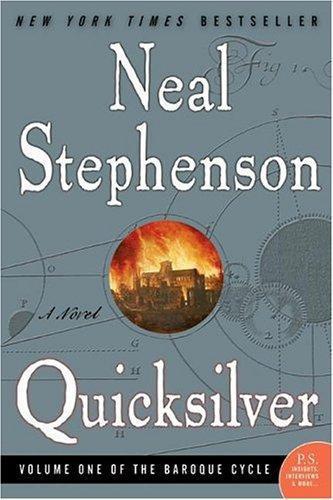
Quicksilver
by
Neal Stephenson
Published 9 Sep 2004
Why put the information on such a complicated system, when a simple FAQ is easier? Because we are hoping that the annotations of the book on this site will seed a body of knowledge called the Metaweb, which will eventually be something more generally useful than a list of FAQs about one and only one novel. The idea of the Metaweb was originated by Danny Hillis. My own view of the Metaweb is pretty straightforward: I don’t think that the Internet, as it currently exists, does a very good job of explaining things to people. It is great for selling stuff, distributing news and dirty pictures, and a few other things. But when you need to get a good explanation of something, whether it is a scientific principle, a bit of gardening advice, or how to change a tire, you have to sift through a vast number of pages to find the one that gives you the explanation that is right for you.